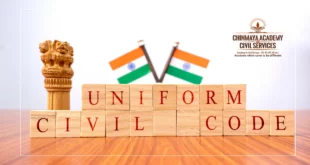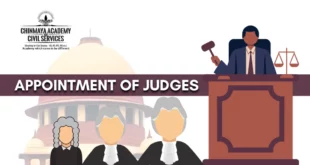- Ten years have passed since the Protection of Children from Sexual Offences (POCSO) Act, 2012, enacted in consequence to India’s ratification of the UN Convention on the Rights of the Child in 1992, came into effect on November 14, 2012.
- The aim of this special law is to address offences of sexual exploitation and sexual abuse of children, which were either not specifically defined or in adequately penalised.
- Amidst the debate on the poor conviction rate under POCSO and a lowering of the age of consent from 18 years to 16 years (though rejected by the Central government), it is worth evaluating its impact on the ground.
- A significant feature of the POCSO Act is its gender-neutral nature. Even though the National Crime Records Bureau has not published data on male and female victims separately, in Chhattisgarh, male child victims accounted for about eight in every 1,000 POCSO cases (0.8%).
- Though the reported number is not big, it still endorses society’s apprehension that the sexual exploitation of male children is also a serious issue that has been largely unreported.
- Second, there is sufficient general awareness now to report cases of sexual exploitation of children not only by individuals but also by institutions as non-reporting has been made a specific offence under the POCSO Act.
- This has made it comparatively difficult to hide offences against children.
- The storage of child pornography material has been made a new offence. Further, the offence of ‘sexual assault’ has been defined in explicit terms (with increased minimum punishment) unlike an abstract definition of ‘outraging modesty of a woman’ in the Indian Penal Code.
No change in investigation
- However, a large part of the investigation of offences under the Act is still guided by the Code of Criminal Procedure (CrPC).
- The investigation of penetrative sexual assault cases generally involves recording the statement of the prosecutrix, a medical and forensic science laboratory (FSL) examination, and determination of the child’s age.
- The POCSO Act provides for recording the statement of the affected child by a woman sub-inspector at the child’s residence or place of choice.
- But it is practically impossible to comply with this provision when the number of women in the police force is just 10%, and many police stations hardly have women staff.
- In 2015, the Ministry of Home Affairs (MHA) introduced a scheme to create an Investigation Unit on Crime Against Women (IUCAW) which was to be made up of 15 police officers (with at least one-third comprising women officers and headed by an additional superintendent of police) in each district.
- Its aim was to ensure quality investigation of crimes against women on a 50:50 expenditure sharing basis; the response by States to the scheme has been half-hearted.
- Similarly, despite funds being provided by the Centre to strengthen mahila desks, many police stations still do not have even a single woman staff.
- Similarly, though there is a provision to record statements using audio-video means, and a Supreme Court judgment, Shafhi Mohammad vs The State of Himachal Pradesh (2018), on capturing and preserving the scene of crime of heinous offences using audio-video means (followed by standardization of technical specifications by the Bureau of Police Research and Development for uniformity), the pilot project has yet to be implemented across States.
- In the absence of proper infrastructure to ensure the integrity of electronic evidence, the admissibility of evidence recorded using any audio-video means will always remain a challenge.
- Another provision mandates the recording of the statement of the prosecutrix by a judicial magistrate.
- Though such statements are recorded in most cases, judicial magistrates are neither called for cross-examination during trial nor are those who retract their statement punished. In such a scenario, such statements get nullified.
- Second, medical examination of the prosecutrix is conducted according to provisions of the CrPC. However, the medical examination of a girl child is conducted by a female doctor (as specified in the POCSO Act).
- Even so, and as observed by the Supreme Court of India, there are instances where the banned two-finger test is still in use.
- Further, there have been no attempts to upgrade the FSLs in States to expedite the examination of exhibits. The fact is that many cases have a charge sheet without an accompanying FSL report, which is then decided by courts.
Issue of age determination
- Third, though age determination of a juvenile delinquent is guided by the Juvenile Justice (Care and Protection of Children) Act, no such provision exists under the POCSO Act for juvenile victims.
- The Supreme Court in Jarnail Singh vs State of Haryana (2013) held that the given statutory provision should also be the basis to help determine age even for a child who is a victim of crime.
- However, in absence of any change in the law or even specific directions, the investigating officers (IOs) continue to rely on the the date of birth recorded in school admission-withdrawal registers — which, in most cases, parents (in the absence of hospital or any other authentic records) are not able to defend in the court.
- Age estimation based on medical opinion is generally so wide in scope that in most cases minors are proved to be major.
- Once a minor is proved to be a major, the probability of acquittal increases based on other factors such as consent or no injury to private parts. Thus, the POCSO Act has made no difference in investigation when it comes to proving juvenility.
Period of investigation
- Further, the time mandated to complete investigation of rape (as in the CrPC, without a similar provision in the POCSO Act) is two months.
- Though the aim is to expedite investigation, it has resulted in two significant changes on the field. One, there is much pressure on the IOs to somehow submit a charge sheet in two months irrespective of what stage the investigation is at.
- The IOs do not want to invite internal punishment as the Ministry of Home Affairs supervises POCSO cases through the Crime and Criminal Tracking Network & Systems (CCTNS) and State police headquarters.
- Thus, unfortunately, the focus is largely on completion of investigation in two months irrespective of quality.
- Second, if a charge sheet was not put up in 90 days of the arrest of the accused, he/she was granted bail.
- Now, when a charge sheet is put up in 60 days of the FIR (and not arrest), the accused may seek bail immediately after the filing of the charge sheet.
- Thus, it is the accused, and not the victim, who gets the benefit of completing an investigation in a shorter time.
- The POCSO Act provides that the court shall presume that the accused has committed the offence. No conditions whatsoever are laid down in the POCSO Act in contrast to the Indian Evidence Act (Section 114(b)) which clearly provides for the prosecution to prove recent intercourse, and the prosecutrix to state in court that she did not consent.
- However, it has been observed that even after the minor age of the victim is proved, no such presumption (howsoever small a relevance it may have) is taken up by the court during trial.
- Under such circumstances, the expected increase in the conviction rate is unlikely to be achieved.
- Therefore, it is time that there is a review of the way the POCSO Act is implemented to see how far it has helped victims of sexual exploitation and what more needs to be done to ensure justice.
SOURCE: THE HINDU, THE ECONOMIC TIMES, PIB
 Chinmaya IAS Academy – Current Affairs Chinmaya IAS Academy – Current Affairs
Chinmaya IAS Academy – Current Affairs Chinmaya IAS Academy – Current Affairs



